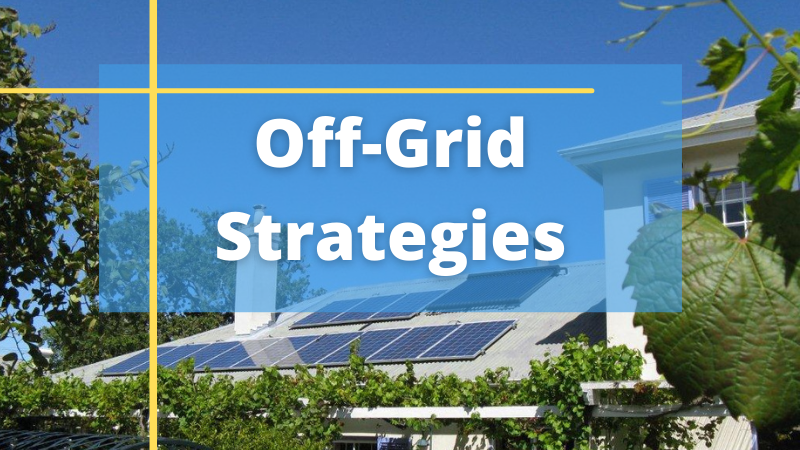12 November
Strategies for Going Off the Grid
Going Off-Grid with is not a decision to be made lightly, but it is also not a decision that needs to be made all at once. Hybrid Solar PV systems allow us to take a staged, modular approach to getting off the grid.
As the cost of Solar systems have continued to decrease, and the price of electricity has continued to increase, so more and more people are considering off-grid. However, it is important to be aware of your options and to understand that going off-grid does not require cutting off Eskom completely. Essentially, there are varying degrees of being Off-Grid, or self-sufficiency. We encourage our most of our clients to install solutions that will make them between 30% and 70% energy Self-sufficient
WHAT IS YOUR MOTIVATION TO GO OFF-GRID?
In deciding what level of energy independence you want to achieve, you must consider what your motivation to go off-grid is:
- Recognise Solar as a great low-risk investment,
- Lack of faith in the utility (Eskom) and the need to overcome the constant threat of Loadshedding on operations
- Save on excessive monthly service fees and high annual electricity increases
- Desire for energy independence
- Commitment to environmentalism and ‘green’ lifestyles
- Limited or no grid connection to your property
Unless you are the 6th person on this list, with little or no connection to the grid at all, it is not worth going completely off-grid
UNDERSTANDING YOUR POWER NEEDS
Optimising the energy consumption on your property is first step to going Off-Grid. Reducing the size of the active loads on the property will reduce the strain on the Solar PV system and will likely reduce the size of the system you will need.
Low-hanging fruit
Before installing your own power-generating equipment, it is essential to ensure that electricity is being used efficiently on your property. This means targeting the low-hanging fruit to reduce the total load on the property:
- Upgrade all your lighting to LEDs
- Switch to gas for your stoves and heaters
- Convert your geysers to solar
- Upgrade your appliances to efficient modern options, i.e. fridges, freezers & washing machines
- Install timers on your geysers and pumps
Lifestyle adjustments
It is also important to recognise that going off-grid with Solar will require shifts in your daily routines. Once the system has been installed, major electric loads will need to be shifted into active the sun hours to maximise the benefit of the PV power.
OPTIONS FOR GOING OFF-GRID
So, what are your options? Solar PV hybrid systems are modular and scalable, giving system owners the ability to expand as their needs change and their budget allows. Essentially, most property owners have three potential options when going off-grid:
- 30% to 70% Off-Grid: Practically Independent
- This is easiest and most common approach taken by our clients.
- Benefit from long-term energy savings, reduced energy costs and lithium battery backup, while maintaining a connection to the grid
- This is most cost-effective option, with the best ROI
- 80% to 95% Off-Grid: Virtually independent
- Taking a step up, this option offers virtual independence from Eskom with the grid connection maintained primarily for contingency planning in the winter months
- This option is viable if your monthly utility service fees are low.
- 100% Off-Grid: Total independence
- This option will always require a generator and a strong awareness of your energy capacity.
- The generator is required for prolonged cloudy days
- A wind turbine can be incorporated in the right areas
- Makes sense if there is no connection to the grid on the property








